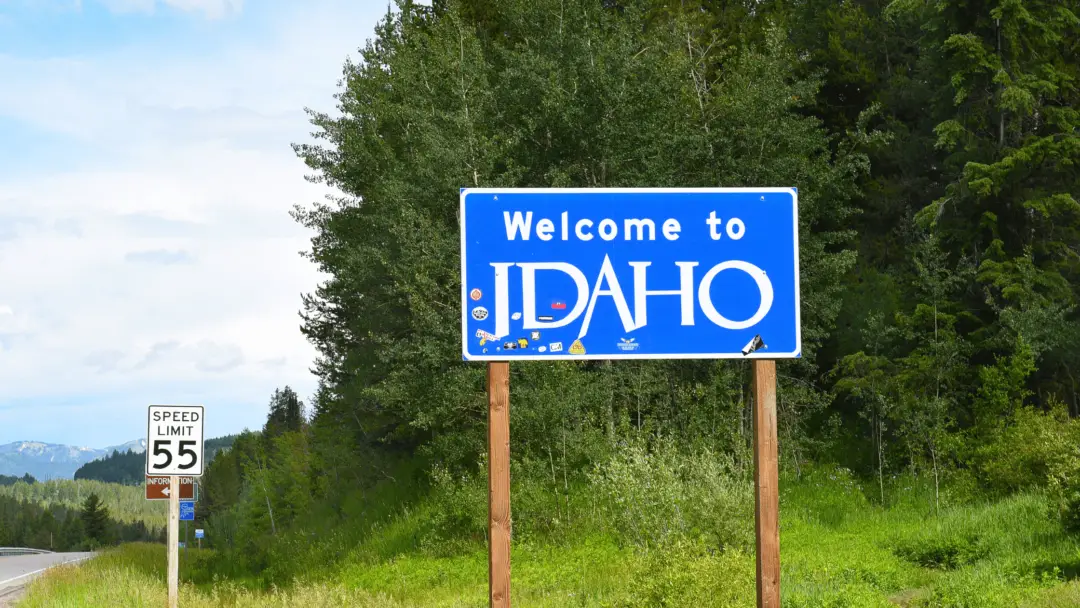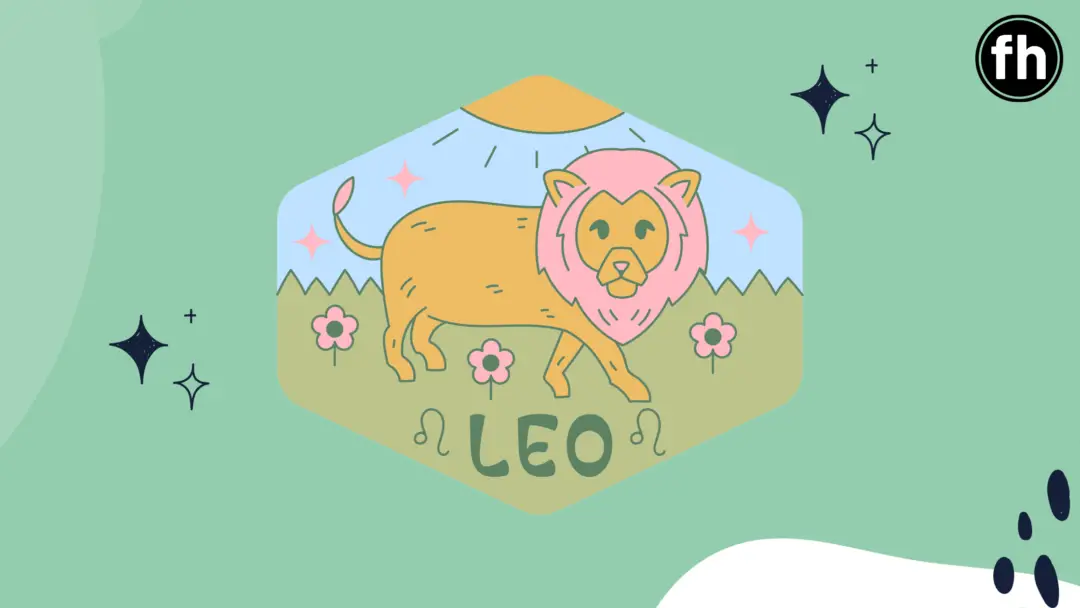Exploring the most popular hobbies in Peru provides a captivating window into the country’s vibrant culture and rich history.
Traveling and reading top the list of favorite activities among Peruvians. These hobbies are not only engaging but also offer a deep connection to the country’s diverse traditions and landscapes.
As you delve into these pastimes, you’ll uncover how they reflect Peru’s blend of ancient cultures and modern influences.

In addition to traveling and reading, engaging in Peruvian artisan crafts is another popular activity that offers you an opportunity to connect with the nation’s heritage.
From traditional textiles and intricate jewelry to unique pottery, these crafts represent centuries-old techniques passed down through generations.
Exploring these crafts gives insight into the creativity and resourcefulness embedded in Peruvian culture.
Religious traditions and festivals also play a significant role in daily life, contributing to the array of social activities that many Peruvians enjoy.
Engaging in these hobbies during your visit not only enriches your experience but also fosters a deeper understanding of the aspects that make Peru uniquely fascinating.
For more details on popular hobbies, you can explore further here.
The Rich Tapestry of Peruvian Culture

Peruvian culture is a complex blend of history, indigenous traditions, and modern innovations. It offers a unique perspective on resilience and richness deeply rooted in its cultural heritage and artistic expressions.
Influences and Historical Overview
Peruvian culture has a profound indigenous heritage, with historical influences from the Inca civilization.
The Inca Trail, a significant cultural landmark, showcases the engineering marvels and spiritual sites of the Incas. Local communities maintain Quechua traditions, reflecting their deep connection to the past.
Colonial and Latin American influences also play a role in shaping modern Peruvian society. This blend creates a diverse cultural tapestry, with indigenous and European elements contributing to the country’s unique identity.
Art, Music, and Dance Traditions
Peruvian art is vibrant, with rich traditions such as weaving and pottery being key aspects.
The artwork often features intricate designs inspired by ancient motifs, like those found in the pottery of Pisaq.
Weaving traditions are particularly notable, involving techniques passed down through generations.
Music and dance are integral parts of Peruvian life.
Traditional folk music, often featuring the charango and panpipes, is popular. Dance forms like Marinera and Huayno are celebrated during festivals, contributing to the cultural richness of Peru.
These traditions reflect a blend of indigenous, African, and European influences.
Language and Literature
Quechua, the language of the Inca Empire, remains widely spoken in Peru, particularly in the Andes.
Spanish is the official language, illustrating the blend of indigenous and colonial histories. This bilingual nature enhances the cultural depth of the country.
Peruvian literature is rich and varied, with works spanning from the pre-Columbian period to contemporary times.
Authors like Mario Vargas Llosa have gained international acclaim, exploring themes of social and political relevance.
The literary scene in Peru provides insight into the nation’s evolving identity and its place within Latin American countries.
Check out our full post on language learning for more great resources.
Popular Hobbies and Pastimes

In Peru, people engage in a variety of hobbies, ranging from adventurous outdoor activities to intricate arts and culinary exploration. Each offers a unique way to immerse yourself in the culture and lifestyle of this vibrant country.
Outdoor Adventures and Hiking
Hiking is a prominent activity in Peru, with the Andes Mountains providing breathtaking trails.
The Inca Trail to Machu Picchu is one of the most famous hikes, offering a blend of natural beauty and historical significance.
In addition, exploring the Amazon Rainforest can be an exhilarating experience. Guided tours allow you to learn about the diverse flora and fauna indigenous to the area.
Local guides often share their knowledge of the ecosystem, making the adventure educational as well as enjoyable.
Arts and Handicrafts
Peruvian arts and handicrafts are rich in tradition and skill.
In local markets, you can find a variety of handmade items such as textiles, pottery, and jewelry. These handicrafts often reflect the cultural heritage and artistic expression of the local people.
One widely practiced art form is weaving. Peruvian weavers use traditional techniques passed down through generations to create intricate patterns in their textiles.
You can also find workshops and classes to learn these skills and make your own handicrafts.
Culinary Exploration
Peruvian cuisine is a delightful blend of indigenous ingredients and techniques with influences from various cultures.
Engaging in culinary exploration allows you to experience the diverse flavors that Peru has to offer.
Taking a cooking class is a popular way to delve into Peruvian gastronomy. You get to learn how to make traditional dishes like ceviche and lomo saltado.
Additionally, visiting local markets provides insight into the rich variety of fresh produce and spices that are integral to Peruvian recipes.
Check out our Huge List of Food Hobbies for more awesome food and cooking-related hobby ideas!
Must-Visit Destinations for Hobbyists

Explore the rich cultural heritage and natural landscapes of Peru that offer unforgettable experiences for hobbyists. From historic cities to breathtaking natural wonders, these destinations provide ample opportunities to engage in your favorite pastimes.
Lima: City of Kings
Lima, the bustling capital of Peru, teems with museums, galleries, and culinary hotspots.
You can explore the Museo Larco, which houses an extensive collection of pre-Columbian artifacts, offering deep insights into Peru’s rich history.
For food enthusiasts, Lima’s gastronomic scene is world-renowned, featuring Michelin-starred restaurants and delectable local cuisine.
In addition, the Barranco District is a must-visit for art lovers. Its vibrant street art, galleries, and bohemian atmosphere make it a creative hub.
Don’t miss out on a walk along the Costa Verde to enjoy the breathtaking seaside views.
Cusco and the Sacred Valley
The former capital of the Inca Empire, Cusco, is a treasure trove for history buffs and adventurers alike.
The Plaza de Armas is surrounded by ornate cathedrals and remnants of Incan architecture. From here, you can embark on a journey to the Sacred Valley, an area dotted with significant archaeological sites like Ollantaytambo and Pisac.
A trip to Machu Picchu is indispensable. This iconic Incan citadel offers a mesmerizing glimpse into the past.
You can hike the famous Inca Trail or take a scenic train ride for breathtaking views. Craft workshops in Cusco also provide hands-on experiences with traditional Andean weaving and pottery.
The Natural Wonders of the Amazon
Puerto Maldonado serves as a gateway to the Peruvian Amazon, one of the most biodiverse regions on Earth.
Here, you can visit the Tambopata National Reserve, teeming with exotic wildlife like jaguars, macaws, and giant otters.
Enthusiasts can enjoy birdwatching tours or night walks to discover nocturnal creatures.
River excursions offer a unique way to explore the vast, intricate waterways of the Amazon.
You can also visit indigenous communities to learn about local traditions and survival skills in the rainforest. The Macaw Clay Lick is particularly awe-inspiring, attracting hundreds of brilliantly colored macaws.
Arequipa and the Colca Canyon
Arequipa, often referred to as the “White City” due to its stunning colonial architecture made from volcanic sillar stone, is a striking destination.
The city is home to the impressive Santa Catalina Monastery and the Museo Santuarios Andinos, where you can learn about the “Ice Maiden,” a well-preserved Incan mummy.
Adventure seekers can head to the Colca Canyon, one of the deepest canyons in the world.
Here, you can embark on guided treks and witness the majestic Andean condors soaring above. The canyon’s terraced landscapes and traditional villages provide a rich cultural and outdoor experience for hobbyists interested in photography, hiking, and anthropology.
Traditional Peruvian Cuisine

Traditional Peruvian cuisine is a colorful tapestry that blends indigenous ingredients with influences from Spain, Africa, China, and Japan. You’ll discover iconic dishes, refreshing beverages, and opportunities to immerse yourself in the local culinary culture.
Iconic Dishes and Local Delights
Peruvian cuisine is renowned for its famous dishes like ceviche, which features raw fish marinated in lime or lemon juice, often served with cancha (toasted corn) and sweet potatoes.
Another beloved dish is Pollo a la Brasa, or roast chicken, typically accompanied by crunchy fries and a fresh salad link to “Pollo a la Brasa” source.
You’ll also find hearty Andean staples such as quinoa, potatoes, and oca, reflecting the agricultural richness of the region link to Andean Cuisine source.
For a seafood twist, try arroz con mariscos, a Peruvian-style paella brimming with shrimp, mussels, scallops, and more link to “arroz con mariscos” source.
Beverages and Unique Spirits of Peru
Peru offers a variety of traditional beverages that are as unique as its cuisine.
Pisco Sour is the national cocktail, made from pisco (a type of brandy), fresh lime juice, syrup, egg white, and Angostura bitters.
Another popular drink is Chicha Morada, a refreshing purple corn beverage flavored with pineapple, cinnamon, and cloves.
Inca Kola, a bubblegum-flavored soft drink, stands out as a cultural icon, loved by Peruvians of all ages.
Meanwhile, Mate de Coca, a tea made from coca leaves, is often enjoyed by locals, particularly in the highlands, where it helps to combat altitude sickness.
Cooking Classes and Market Tours
One of the best ways to immerse yourself in Peruvian cuisine is through cooking classes and market tours.
In cities like Lima and Cusco, you can find classes that guide you in preparing traditional dishes such as ceviche, lomo saltado, and aji de gallina.
Market tours offer a unique glimpse into the local food culture.
You can navigate bustling markets, learn about exotic fruits and vegetables, and discover the essential ingredients used in Peruvian cooking.
These experiences provide a hands-on way to appreciate and bring the flavors of Peru into your own kitchen.
Exploring Peruvian Crafts and Shopping

Peru boasts a rich tradition of artisanal crafts that reflect its cultural and historical heritage. You can find a variety of unique and high-quality items from textiles and alpaca wool products to ceramics and silver crafts or exquisite jewelry.
Textiles and Alpaca Wool Products
When you think of Peruvian textiles, the vibrant patterns that decorate traditional garments such as ponchos and shawls might come to mind. These items are often made from alpaca wool, valued for its softness and warmth.
Among the most popular finds are handwoven blankets, scarves, and sweaters. Alpaca wool, particularly from baby alpacas, is coveted for its luxury.
Markets in Cusco, like the famed San Pedro Market, and artisan shops throughout the Sacred Valley, offer an array of these products. Make sure to look for items made by local specialists to get authentic pieces.
Ceramics and Silver Crafts
The artistry in Peruvian ceramics dates back to the Inca era. Towns like Pisaq are renowned for their pottery, where artisans paint intricate designs by hand.
Hand-painted ceramic bowls, plates, and decorative vases showcase the exquisite craftsmanship.
Silver crafts, particularly filigree jewelry, are also noteworthy. Cities such as Lima and Arequipa house workshops where you can witness silver being transformed into delicate designs.
Silver jewelry from Peru often incorporates traditional motifs that make it a treasured souvenir.
Jewelry and Unique Mementos
Peruvian jewelry is rich in history and design, often featuring materials like silver and semi-precious stones. Filigree stands out for its detailed craftsmanship, creating pieces that are delicate yet striking.
Those interested in unique mementos will also find Retablos, a type of traditional Peruvian folk art that depicts religious or historical scenes within hand-crafted wooden boxes.
These serve as meaningful souvenirs, representing the rich culture of the regions. Shops in cities like Cusco or markets in Lima offer these along with other local handicrafts, ensuring you take a piece of Peru’s heritage home with you.
Festivals and Events in Peru

Festivals and events in Peru are a vibrant showcase of the country’s rich cultural heritage, featuring colorful celebrations, traditional music and dance, and exquisite art and crafts. These events offer a unique opportunity to immerse yourself in the customs and traditions of local communities.
Cultural Celebrations and Religious Processions
One of the most significant cultural celebrations in Peru is the Inti Raymi, or Festival of the Sun. Held in Cusco, it honors the Sun God and features approximately 750 actors dressed in traditional costumes re-enacting Inca rituals.
Another notable event is Fiestas Patrias, the national celebration of Peru’s Independence Day on July 28th and 29th, marked by parades and patriotic events.
The Festival of the Crosses, blending ancient Incan beliefs with Spanish traditions, is another important event. This festival, held in villages across the Andes, involves processions, music, and dances performed by local communities to ensure a good harvest and honor Mother Earth.
Music and Dance Festivals
La Fiesta Candelaria, celebrated in November in Puno, is renowned for its vibrant music and dance. This two-week celebration involves thousands of dancers and musicians parading through the streets in colorful, elaborate costumes.
The festivities pay tribute to the Virgin of Candlemas and are deeply rooted in the blend of Catholic and indigenous traditions.
Cusco’s Inti Raymi also includes traditional music and dance performances that bring the Incan culture to life. Furthermore, the Carnaval de Cajamarca offers a lively mix of music, dance, and elaborate costumes. It’s an essential event for anyone looking to experience the joyful and dynamic spirit of Peruvian festivals.
Art and Craft Fairs
The Mistura festival in Lima, held every September, is a celebration of Peruvian cuisine where culinary experts and street vendors showcase regional delicacies.
Art and craft fairs are also integral to Peru’s festival scene. These fairs often accompany major festivals, providing an opportunity to purchase handmade crafts, textiles, and artworks that reflect the rich cultural heritage of the Peruvian people.
Local artisans use these fairs as a platform to display their durable and intricately crafted goods.
Practical Tips for Travelers and Hobbyists

When traveling to Peru, knowing how to navigate the transportation system, shop efficiently, and stay connected while handling cash transactions is essential for a smooth experience. Here are some important tips to help you make the most of your trip.
Getting Around Peru
Getting around Peru can be straightforward if you are prepared. In cities like Lima, the district of Miraflores is well-known for its tourist-friendly atmosphere, including safe and easy-to-use public transportation.
Taxis are common, but make sure to use registered ones or taxi apps like Uber for safety.
For longer distances, buses and trains are reliable. The Vistadome train provides a scenic journey to Machu Picchu, and it’s well worth the experience.
Domestic flights are also available and can save time when traveling across this geographically diverse country.
Shopping and Bargaining
Shopping in Peru can be an adventure, especially in markets where bargaining is common. In Cusco and other major tourist areas, you can find unique souvenirs such as hand-woven textiles, alpaca wool clothing, and intricate jewelry.
When bargaining, start by offering about half of the initial asking price. Politeness and a smile can go a long way.
Be mindful of quality, especially with products like alpaca wool; authentic items usually feel soft and warm. Avoid purchasing items made from endangered species, as this is both illegal and harmful to Peru’s biodiversity.
Staying Connected and Handling Cash
Staying connected in Peru is relatively easy. Most urban areas, including Miraflores, have good internet coverage.
Purchasing a local SIM card can be a cost-effective way to ensure you have mobile data. Many cafes and hotels offer free Wi-Fi.
ATMs are widely available, and it’s advisable to withdraw cash in soles, the local currency.
Always carry some cash, as smaller vendors and markets may not accept cards. Also, be aware of international transaction fees and notify your bank about your travel plans to avoid any issues.
For stargazing enthusiasts, a visit to the Cusco Planetarium can offer memorable experiences.
Frequently Asked Questions

Peru’s rich cultural heritage and varied landscapes significantly influence the hobbies and leisure activities enjoyed by its people. From traditional activities rooted in indigenous practices to modern trends influenced by global culture, Peru offers a wide range of pastimes that reflect its unique history and diversity.
What traditional activities are widely enjoyed by Peruvians?
Peruvians widely enjoy traditional activities like Andean music and dance, often featuring instruments such as the pan flute and charango. Celebrations and festivals are central to Peruvian life, with colorful parades and traditional dances like the Marinera showcasing the rich cultural heritage.
How do Peruvian cultural celebrations influence leisure pursuits?
Cultural celebrations in Peru, such as Inti Raymi and Fiesta de la Candelaria, greatly influence leisure pursuits.
These events often include traditional music, dance, and food, providing a platform for cultural expression and community participation. Engaging in these festivities is a prominent hobby for many Peruvians.
Which hobbies are most reflective of Peru’s historical heritage?
Hiking to historical sites like Machu Picchu and visiting ancient ruins reflect Peru’s historical heritage. Many Peruvians and tourists alike enjoy exploring these archaeological treasures.
Additionally, traditional crafts such as weaving and pottery-making, which are inherited from past civilizations, remain popular hobbies.
In terms of hobbies, how does the everyday life of a Peruvian manifest?
Everyday life in Peru often includes family-oriented activities and communal gatherings. Weekend markets bustling with traditional foods and crafts are popular. Sports like football (soccer) enjoy widespread enthusiasm, cementing their place in daily recreational life. Socializing in plazas and enjoying local cuisine are common leisure activities.
What are some modern hobbies that have become popular in Peru in recent years?
Modern hobbies gaining popularity in Peru include surfing along the coasts of Lima and Paracas.
The growing interest in technology has also seen a surge in gaming and social media usage. Additionally, fitness activities such as yoga and running have become trendy, especially in urban areas.
How does Peru’s diverse cuisine play a role in its recreational activities?
Peru’s diverse cuisine is central to its recreational activities.
Cooking is a valued hobby. Peruvians often gather for communal meals featuring dishes like ceviche and lomo saltado.
Culinary festivals, such as Mistura in Lima, celebrate this rich food culture. They attract both locals and tourists.





